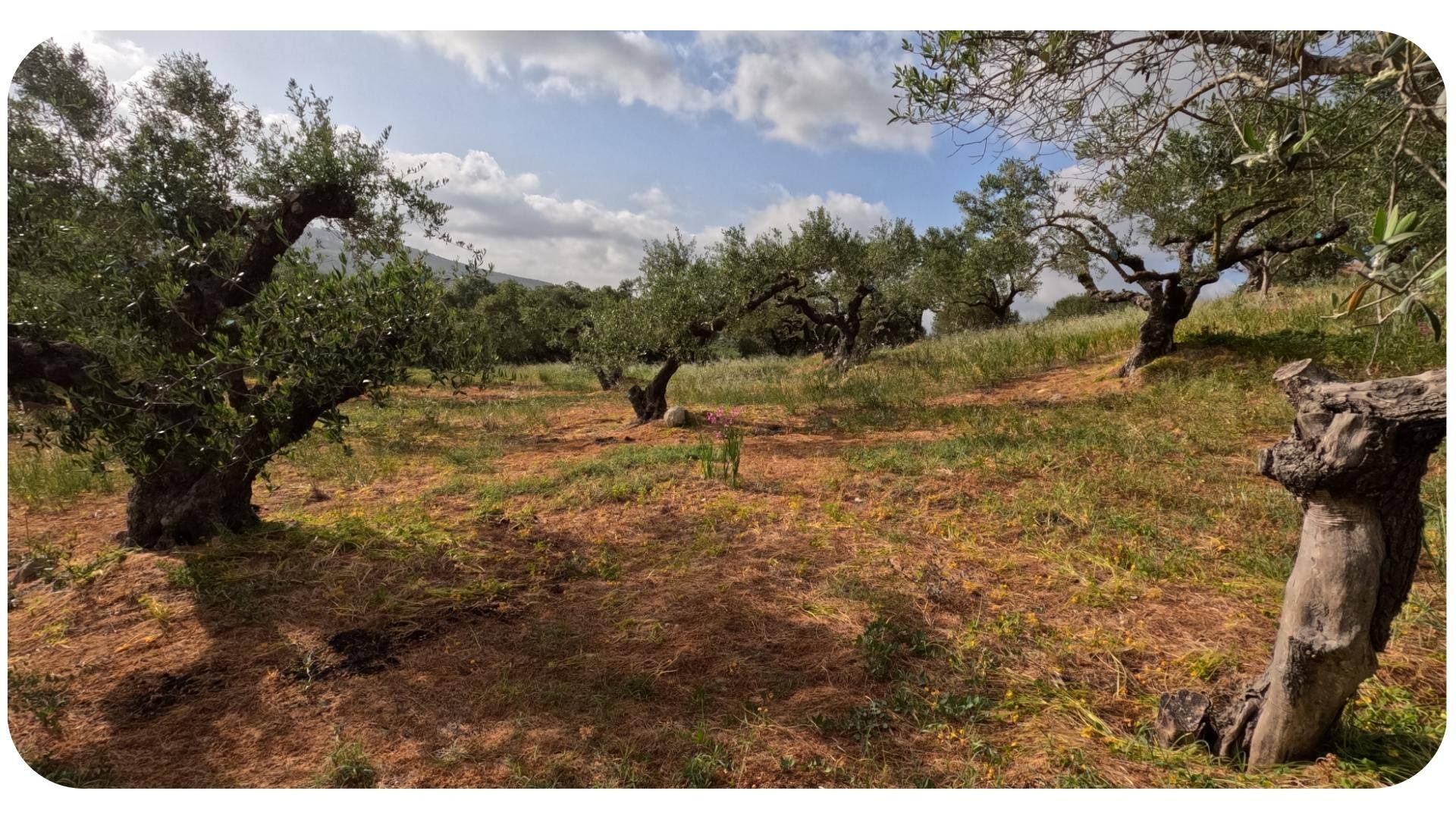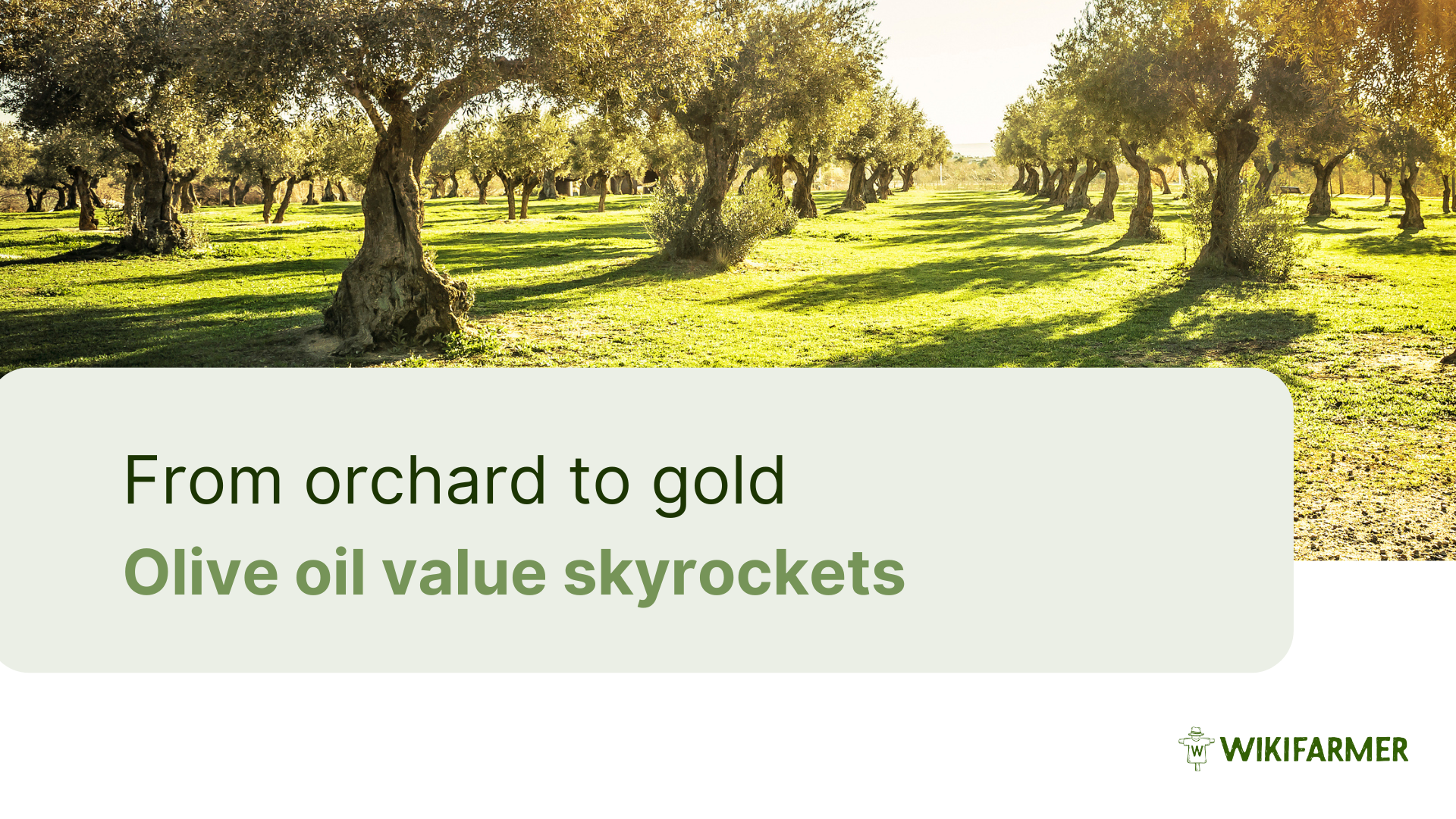Olive Oil: A year in review

2023-24 has been a challenging yet revealing year for the olive oil industry. Prices surged to record highs due to drought and climate change, but a promising future lies ahead with an expected bumper harvest and improved market stability.
As the new olive oil season debuts, producers are hard-pressed not to be disheartened by the dismal harvest due to conditions that afflicted their groves in the past year, making the 2023-2024 season one of the worst in the last 30 years.
What Homer called the "Liquid Gold," olive oil, has been at the center of some of the most pressing matters of the food industry during the former season. The past two years have marked record-high olive oil prices, and supply scarcity, sustainability concerns, and soaring prices have not gone unnoticed; this olive oil season has seen volatility unlike any other, drawing attention to a broader crisis in the olive oil market's dynamics.
During olive harvesting
This crisis is primarily attributed to factors such as low crop yield and decreased harvested volumes, lower quality of produced oil, and extreme weather events. But the root of the problem causing these head-scratching highs seems to lie in the intricate relationship between supply and demand. As the season has come to a close, we recap the global concerns that raise sustainability and accessibility issues over this essential product, looking forward to a more hopeful outlook in 2024-25.
The impact of climate change
Climate change, export controls, and soaring fertilizer costs in the past year have left a bitter taste; erratic weather patterns, rising temperatures, and drought conditions in the Mediterranean basin have taken their toll, disrupting the growing cycles of olive trees and leading to lowered crop yields and lower-quality olives. "The high temperatures during the flowering season led to flower burning, leading to an 80% decrease in olive oil production compared to the previous campaign," describes Panos Danatzis, a Greek olive oil producer working with Wikifarmer and owner of Socrates olive oil.
Along with the poor season, he explains how producers faced difficult choices. "I chose to prioritize long-standing customers and to keep my prices stable. Although many new customers reached out to me, as other producers had no production, most of them couldn't be served as our olive oil stock ran out very early". On the other hand, Spain, the leading producer, managed to achieve a total of 852,550 tons by August 2024 despite limited production. "Olive oil suppliers across the Mediterranean have made a significant shift in how they manage supply shortages for the time being. However, the long-term impact of these extreme weather conditions is concerning; if these trends continue, it could reshape the olive oil market for years to come," says Miguel Colmenero, Wikifarmer’s Commercial Director.
High demand and market swings
It seems that even though production in olive oil-rich regions of Southern Europe has decreased, global demand has remained high throughout the season. Due to the decreased yields, prices soared higher than in the past five years, with Extra Virgin Olive Oil (EVOO) prices remaining above 9€/kg, reaching premium levels. However, the high prices did not deter customers from purchasing olive oil, as Spain's average monthly consumption in 2024 reached 71,144 tons—3.60% higher than the 68,627 tons consumed monthly in 2023. During a typical crop year, average monthly olive oil consumption can reach around 130,000 tons. This year, despite high prices, loyal olive oil consumers have not been deterred and show commitment, continuing to choose it over other vegetable oils due to its significant nutritional benefits.
In July of 2024, Spain reduced VAT on olive oil to 0% to ease market pressures, aiming to decompress the situation and help with accessibility. Meanwhile, producers held onto their limited stock in Greece to maximize profits, although the market's volatility left no clear trend for the 2024/25 season; Portugal showed positive signs and experienced a successful crop, marking its emergence in the olive oil market and anticipating an even larger crop in the upcoming season. On the other hand, Turkey went bold, banning bulk olive oil exports in August 2023 to address price fluctuations and protect domestic sales, resulting in a significant amount of olive oil never reaching the market.
Trading rules are being challenged
Adapting to the new landscape, decision-makers in the olive oil business are going through a behavior change. Previously, buyers from large retail chains, food service companies, importers, and wholesalers expected stable prices year-round, with long-term contracts becoming the norm. This was the "established rule" in olive oil trading for years. However, in the past four years-especially the last 18 months-things have dramatically changed. Professional buyers are inevitably becoming more flexible, getting used to price fluctuations without much resistance. Even retail buyers seem to show a level of understanding in adapting to the new reality.
Reflecting on these market dynamics, Manos Kokkinelis, an organic olive oil producer under the brand Seven Olea, raises another observation: "The high price of olive oil, combined with inflation, creates fertile ground for increased demand for private label products and substitutes." Mr. Danatzis confirms that a key consequence of the significant price increase is that a percentage of consumers in Greece turn to alternative oil options.
Forecasts
Olive oil suppliers see a "light at the end of the tunnel," with forecasts for the 2024-25 campaign anticipating a production increase of about 18.5%, reaching 2.7 million tons, with Spain contributing 45.5% of the expected yield. Things are looking up as a bumper harvest is expected, leading to a shot-up supply compared with last year and, ultimately, lower prices as the new oil works its way through the supply chain.
Based on Wikifarmer's analysis, major olive oil-producing countries expect higher yields this year, with Spain and Tunisia forecasting significant increases of 47% and 28%, respectively. In contrast, Italy faces challenges due to severe drought conditions in key production areas and the impact of the Xylella fastidiosa bacteria.
Climate change is real, and it is extremely difficult to predict olive oil production and quality for the forthcoming season. Manos Kokkinelis states, "Planting at higher altitudes and spreading out olive groves may help mitigate the phenomenon of alternate bearing in olive trees." However, Panos Danatzis is coming up with alternatives to adjust to the new reality "This year, for the first time, we experimented with using kaolin on some trees to protect them from heat stress".%20(14)-jpg-1.jpeg?width=800&height=600&name=Graphics%20(800%20x%20600%20px)%20(14)-jpg-1.jpeg)
Final Thoughts and Outlook
As the world of olive oil begins to stabilize, the lessons learned from the 2023-24 season should guide the industry's path forward. From the olive groves of Southern Europe to the global marketplace, we must work together to build a more sustainable, equitable, and resilient food system. "Continuous training on best practices and sustainable methods in olive oil production is also essential, particularly in mills. Regular inspections of procedures are also necessary to enhance quality and transparency in the olive oil sector", explains Manos. Ensuring that essential goods like olive oil remain accessible will require a concerted effort from all stakeholders, with climate change at the forefront of the conversation.
.png?width=450&height=87&name=New%20Logo%20(1).png)

